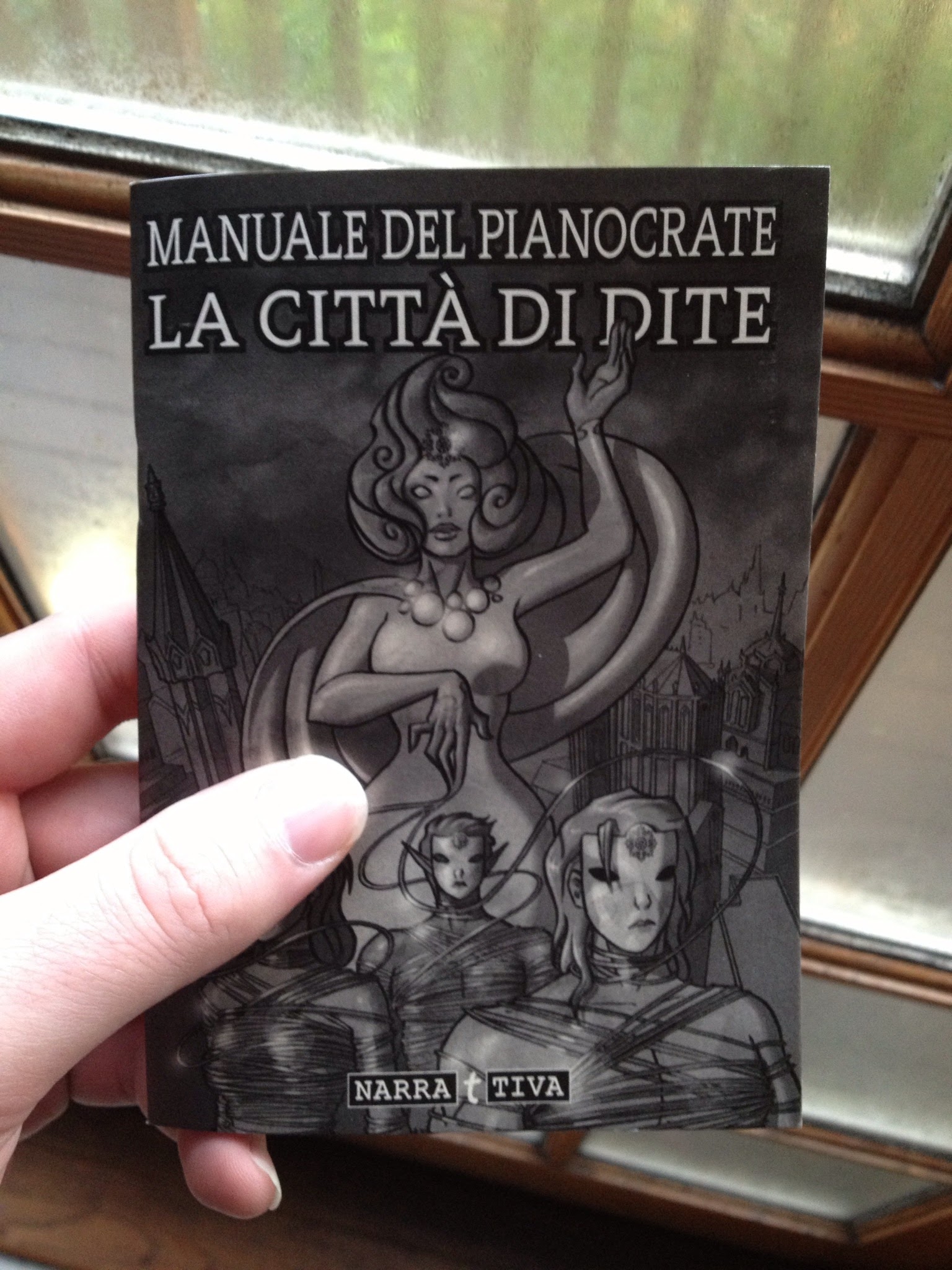Life is incredibly busy and stressful right now, but I’ve been stealing hours in the morning and during my lunch hour to draft parts of a new Calvino-inspired module that I’m writing for the folks at Narrattiva who put together the Italian edition of Dark Heart. The first two sections and a draft outline are posted here, and I will continue to update it as I find time.
Originally shared by J. Walton
If on a Wintry Plane a Freebooter (intro)
With apologies and gratitude to Italo Calvino (1923-1985)
For Claudia Cangini Paolo Bosi and the other fine folks at Narrattiva
[1]
You and your companions are about to begin playing Jonathan Walton’s new Dungeon World module, Se su un piano invernale un filibustiere (“If on a wintry plane a freebooter”). Best to find a space and time all to yourselves. Text your other friends right away, “No, I can’t go see Thor 2!” Use more exclamation marks—they may not be convinced otherwise—“We’re playing an RPG!!! One with pencils and dice!!!” Maybe they still don’t get it; call them and yell: “We’re going to play a new Dungeon World module!” Or, if you prefer, just ignore them and hope they’ll leave you alone.
You acquired this module over the Information Superhighway, a marvel of modern technology and convenience that has nevertheless recreated nearly all the failings and inconveniences of the previous ways of doing things. Such is the inexorable march of history towards endlessly repeating itself. While the module consists chiefly of an entirely-too-long string of zeros and ones, running staccato like a Philip Glass opera through the cyber brain of computers, you likely still feel the need to print it out in preparation for giving it life through the words and behaviors of yourself and the other players. Hence the module will be laboriously reincarnated twice: from bits to the pale flesh of dead trees and then in your own fleshy selves, which – according to the Gnostics – are merely prisons for the divine spark within you, crafted by a malevolent creator. But hardly anyone believes that anymore, so you feel confident that by instantiating the module in your flesh you are not imprisoning it but, rather, setting it free and perhaps also likewise yourselves.
However, you of course remind yourselves that this is just one of an infinite stream of dungeonish games that has flowed incessantly since RPGs first emerged like Venus from the ocean of wargaming. You must keep your expectations in check. While this Jonathan Walton person has been known to exhibit a taste for the unique and experimental, this is still Dungeon World. You might prefer to be playing something a bit more provocative, such as Matteo Turini’s Novanta minuti or Julia Bond Ellingboe’s Steal Away Jordan, but your friends may exhibit undue caution about straying too far from game experiences that are tried and true. They love adventures but only so long as they are not particularly adventurous. This new Dungeon World module may seem a bit peculiar (it doesn’t really begin as you’d expected it would), but surely it will proceed with the delving and freebooting and clashes with monsters in an imminent fashion. If not, if you discover that the module becomes increasingly unnerving, causing you to question previously held beliefs about games and the world that you’d rather not be dissuaded from, you and your friends can always bail and play Munchkin or Mario Kart. You are, after all, fully in control of what you do and don’t do. You are a wonder of self-possession and self-actualization, of which Ayn Rand would be rightly proud.
Indeed, it’s a wonder you find time to play games at all, especially ones that involve multiple individuals all appearing in person at the same time, given the demands of contemporary life. Even more wondrous is that you have chosen to play this particular module, of all the game experiences you could have chosen to partake in. In doing so, you have miraculously survived unscathed – or perhaps only been lightly wounded – in the act of navigating the unnervingly dense forest of Games You’ve Always Wanted to Play, Games Others Have Repeatedly Insisted You Must Play, Games That You Often Pretend to Have Played That You Should Probably Really Play at Some Point, Games That Everyone Else Has Already Played So You Better Play Soon, Games That Your Friends Have Personally Made Which You Feel Obligated to Play, Games That Are Crucial to the Contemporary Understanding of the Medium of Roleplaying, Games Made by Up-and-Coming Designers Whose Names are Already Whispered in Semi-Reverent Tones, Games That Are Probably More Fun or More Important Than This Game, Games That Would Help You Understand Other Games Better If Only You Actually Played Them, and so forth.
But here you all are now, having created a new set of characters or pulled existing ones out of your stylish messenger bags, ready to embark on a journey into the unknown. For in Dungeon World there are no set “encounters” or pre-planned plots, just a set of methods by which you play to find out what happens. Indeed, that makes modules for Dungeon World – or any other sandbox game – particularly peculiar. How will the author invoke a set of colorful and exciting circumstances and yet allow the players, including the MC, sufficient leeway to follow their own bizarre whims and caprices? You suppose it is time to find out.

